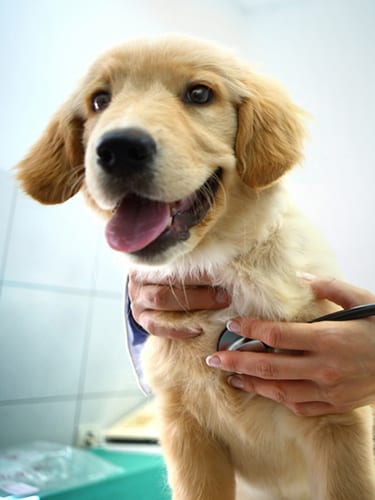Diagnostic imaging for veterinary patients
Our diagnostic imaging services
We have a range of diagnostic imaging tools that help us pinpoint specific health ailments with pets.
If you have questions about any of our tools, contact us at (828) 328-6697.


Fluoroscopy is a continuous x-ray image on a monitor, like an “x-ray movie.” Fluoroscopy (commonly referred to as “fluoro”) can show “real-time” movement of structures in the body. Fluoroscopy is frequently used for the proper and accurate placement of surgical implants as well as contrast studies to evaluate esophageal function and diagnose portosystemic shunts.
Digital radiography is much faster than conventional radiography, and the software allows adjustment of brightness, contrast, zoom, and pan on a single exposure. Digital radiography eliminates the darkroom, chemicals, and manually filed plastic film. Digital X-rays may be stored on-site, offsite, or both and shared via a link sent by email to a colleague, client, or for a consultation with a board certified radiologist.
Endoscopy allows a visual examination of internal organs and body parts without invasive exploratory surgery. Using the endoscope, tissue biopsies can be taken for analysis, and foreign bodies may be removed. The endoscope consists of a long, flexible insertion tube with a bending tip at the end that enters the body, an eyepiece, and a control section. The tip of the endoscope is manipulated using a control knob in the hand piece.
In addition to the light source, two channels are present within the endoscope. One channel permits various endoscopic tools to be passed and fluids to be suctioned or samples taken. The other allows air or water to be passed into the stomach/intestine to insufflate (inject air into the area), or wash away mucus from the viewing port. Special video cameras can be attached to the endoscopes which allow viewing of the exam on a television screen, as well as recording the exam on video.
Types of endoscopy include these:
- Bronchoscopy: an exam of the lower airways.
- Colonoscopy: an exam of the transverse colon, ascending colon, cecum, large bowel, and rectum.
- Endoscopy: an exam of the esophagus, stomach, and upper intestines.
The otoscope is used to look into and examine the ears of dogs and cats. It is useful in the diagnosis of acute and chronic otitis externa and otitis media which are common disorders in dogs and cats. The ophthalmoscope is used to look into and examine the eye and diagnose diseases of the retina and cornea as well as other problems.
Ultrasound is high frequency sound waves that are inaudible to the human ear and are used to create images of organs and structures within the body. Ultrasound is used to help diagnose problems in the liver, kidneys, spleen, gall bladder, and other body organs including the heart. Color Doppler echocardiography is an ultrasound of the heart that uses color Doppler technology to show the flow and direction of blood through the heart, and show the presence of abnormal valves and vessels.
This advanced imaging technology produces cross sectional images, or slices, of body organs and structures. CT imaging is useful to diagnose diseases or trauma, guide interventional instruments, and monitor the patient’s response to therapy.
Arthroscopy combines the latin terms “Arthro” (of the joint) and “scopy” (evaluation of, usually with an instrument) to describe the evaluation of joints with the use of an arthroscope. With an arthroscope (a combination of lenses and mirrors) and a camera (to project images to a monitor), we are able to evaluate the joints of dogs and some cats. By using a small scope diagnosis and treatment of some joint disorders, we can increase diagnostic capability (by viewing an enlarged image) as well as decrease post-operative pain and damage to joints that occurs with traditional surgery. Elbows, stifles, shoulders, and hips are the most common joints evaluated in veterinary medicine.
Laparoscopy allows the use of a small (10mm – about ½ inch) scope and camera along with ports (small incisions for surgical instruments) to evaluate the abdomen and perform some surgical procedures. Liver biopsy, cholecystectomy (removal of the gall bladder), ovariectomy (removal of the ovaries), and laprascopic-assisted procedures (for example gastropexy or tacking of the stomach) are examples of these procedures. For procedures in the chest, the term thoracoscopy is used. The benefits of this approach include: smaller incisions, less pain, and faster recovery time.
We want to help your patient
If your patient needs help using our diagnostic imaging services, please fill in the form below.

